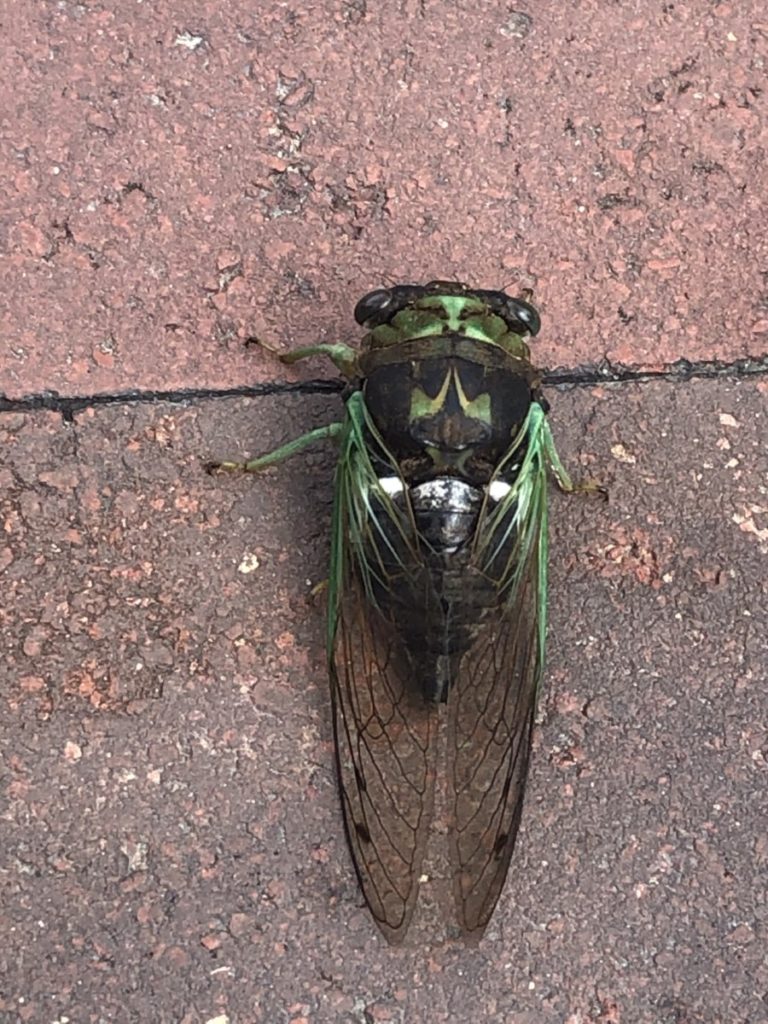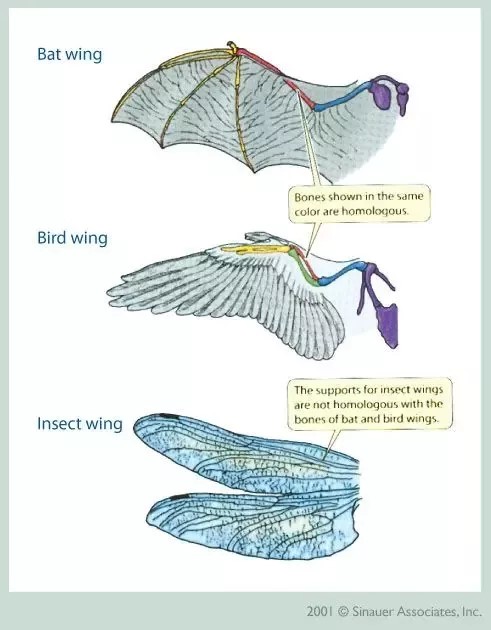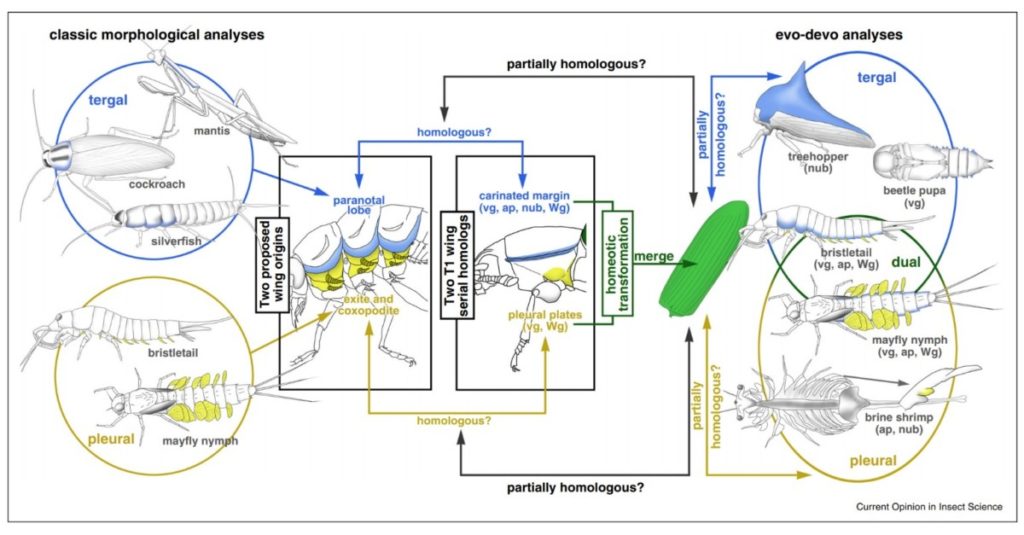
Growing up, I’ve always had a fascination for insects, including spiders, praying mantis’, moths, etc. When my friends ran away from a beetle on the playground, I always wanted to examine it and see how they worked. As I was walking around campus last week I found the first cicada I saw of the season. What’s interesting about Cicadas is that they can live underground for about 2-17 years and only come out once a year for up to 3 weeks. So if you see a cicada around campus, you’re actually seeing one that can be almost as old as you! But that’s a story for another day.
After watching this fella for a couple minutes, I suddenly remembered about the evolutionary trees I learned in class. I noticed something odd, birds and insects have no common ancestor at all despite both developing wings. I’ve always thought they shared an ancestor, but birds are more closely related to dinosaurs than anything. So, I sought out this question with an answer that may not be super obvious, how did insects achieve flight?

Examining the wings of both insects and birds reveals far more questions than answers. For example, insects often have two pairs of wings while birds have one. Bird and bat wings also have bones in them meanwhile insects do not. Insect wings usually have scales whereas birds have feathers. And finally, insect wings are considered outgrowths of the insect exoskeleton that can develop over time (think moths and butterflies) whereas bird wings are “appendages,” or limbs most closely related to arms and legs.
Well, this doesn’t help, so how did insect wings come to be? According to Courtney M Clark-Hachtel and Yoshinori Tomoyasu, scientists at the National Science Foundation, there are two main theories over the formation of insect wings. The first of which, The tergal origin hypothesis describes it as an ancestral feature evolving from extensions of the thoracic tergum (the dorsal part of an insect above its head), allowing insects to glide and eventually fly; whereas the second theory, The pleural origin hypothesis, suggests that insect wings are from the growth of pleural tissue or it can be de novo meaning that one member of a species mutated wings and simply passed it on its evolutionary line.
These two hypotheses have always been an issue amongst scientists but in recent years, due to a new method of molecular and developmental techniques (evo-devo), we may have uncovered the truth behind insect wings after all. In the late 1900s, it was discovered that the wing genes of apterous and nubbin are also found in those of the lobes of brine shrimp. These genes can have a massive impact on insect ancestry as could suggest a common ancestor between crustaceans and insects which was previously unheard of.
But what if both these two theories are correct in some way? A study conducted in 2010 by Niwa et al. studied multiple species of bristletails and mayflies and found that both the tergum and pleural tissue shared roles in wing development. Although this could provide support for the dual theory, it’s not without limitations. Primarily, it’s still very much in infancy and lacks a proper explanation for all insect species. Further and more advanced studies / testing would be required. The below diagram attempts to explain the hypothesis in a simple manner.

The diagram separates insects into two different groups based on the wing structure, either tergal or pleural. It then compares insects from both groups to look for similarities in their wing development and seeks out any homologous structures between them. But this has limitations as nothing is concrete within the graph and it’s on a speculation basis from each individual species.
Whether or not any of these theories are true is yet to be proven. We may simply never know what the true origin of insect wings are and this mystery can continue to baffle the likes of me and scientists around the world for years to come.
https://blogs.miamioh.edu/tomoyasulab/files/2017/09/2016-COIS-Clark-Hachtel.pdf
From a young age, I was also interested in the different classifications of species and particularly homologous and analogous structures in how species evolved. I believe that this blog post hits the right spot when talking about the different wings and the appendages for different species. I also found that the two studies you added one by Courtney M Clark-Hachtel and Yoshinori Tomoyasu, and the other by a Niwa, really shows your elaboration of the two theories presented, and last but not least makes for a complete and well-rounded blog post. Also, I love your personal connection in the beginning, and the fun fact of how the lifetime of a cicada is far longer than anybody would’ve imagined.
Hey Jason!, this topic has also interested me since I was very young. The process of how homologous, and analogous structures developed throughout the history of evolution is fascinating, and I feel that your explanation hits the right spot when you talk about the appendages. I also love the addition of the two studies in order to elaborate on the two hypotheses that you mentioned. Lastly, I also found your background story very intriguing, as I have never met a person who enjoys insects, and it is good to see a change of perspectives, also I learned a new fun fact about cicadas, and how they are alive for far longer than I could’ve ever imagined.